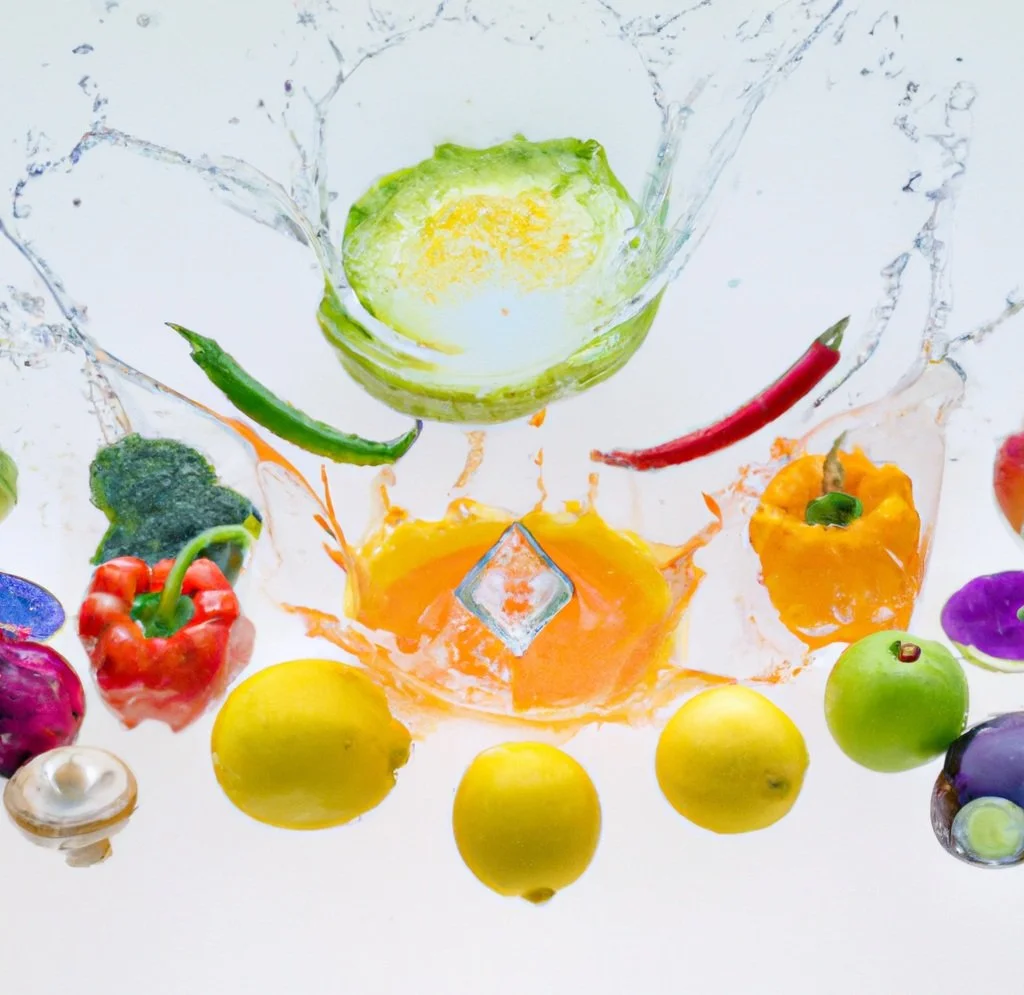Why I count colours not calories
Many people with the desire to change their body shape or shape or size turn to some form of rule-led dietary regime, which typically involves restricting calories or food groups. However, have you considered that weight gain may not be the result of a state of over-consumption, but under-nutrition?
Let’s explore why reaching and maintaining a healthy body is nothing to do with calorie restriction and may be loads to do with eating a spectrum of colours.
Phytonutrient power
You may have heard the phrase "overfed and undernourished" making its way into public discussion. Despite the mainstream belief that people in larger bodies are most certainly over-eating and, by default, reducing calories is the solution to weight-loss, the latest research suggests that obesity is actually associated with a relative lack of nutrients.
There is one specific group of nutrients called phytonutrients which is particularly interesting. These are the plant-based compounds are what gives foods their natural colours. And whilst we get less than a teaspoon of phytonutrients on a daily basis, they have a beneficial impact on reducing inflammation, balancing our stress response, and improving our insulin sensitivity – all things which in turn help create the internal environment for which our body to thrive.
A study in the Journal of Human Nutrition and Dietetics found that, calorie for calorie, obese individuals consume significantly fewer phytonutrients than non-obese individuals, as measured by dietary phytonutrient-index (Phytochemical Calories/Total Calories x 100).
The same researchers also noted that phytonutrient intake was inversely proportional to inflammatory markers in the blood stream (CRP, IL-6, IL-1, and lipid peroxidase debris).
In other words, not only were people with a low phytonutrient-index fatter, they were more inflamed. Inflammation itself is an independent risk factor for numerous diseases, particularly heart disease. What the researchers did not explain was whether the inflammation caused the fat or the fat caused the inflammation. Either way, it appears to be linked to undernutrition: not enough phytonutrients!
The key message is our body is clearly more of a chemistry lab than a calculator, and in fact there are numerous further resources explaining why the calories in / calories out model doesn’t work.
A recent research study published by my teacher, Dr. Deanna Minich, which illustrates the importance of eating across the whole spectrum of colours.
Fuel for your gut
Eating a spectrum of plant-based foods, and in-turn phytonutrients, is not only protective to the body and helps it to function well, but it also helps support a healthy, well-balanced gut microbiome. This is the ecosystem of trillions of bacteria which reside inside us, working to help support our digestion of food, aiding metabolic processes, influencing capacity to fight pathogens, and signalling messages to our brains which impact our mental and emotional wellbeing too.
The research tells us that dietary diversity means a more diverse and robust gut microbiome which in turn is associated with positive health outcomes. What’s more, the microbiome of an obese person is measurably different to the microbiome of a lean person, so it may be that only by working on diet and lifestyle to address microbial imbalances, that stubborn weight may be lost.
It’s my view that to optimally support our own internal chemistry lab we should work towards including around ten portions of colourful plant-foods a day for optimal health. Yet, the average adult Brit gets about 4.2 portions of fruits and vegetables daily, falling below the 5 A Day recommendation and substantially short of the optimal ten servings. And in the US studies show that eight out of 10 fall short in colour.
Diets don’t care
So back to restrictive, diet-industry approaches to eating – do they care about your phytonutrient intake, gut health or your mental wellbeing? They may get short-term weight-loss results but, as far as I’m aware, none are led by health (either physical and mental) or nutrition as a priority, or encourage dietary diversity and variety.
Worse still, many restrictive diets can leave people deficient in the vitamins, minerals, protein and essential fatty acids crucial for optimum health, energy and recovery from exercise and other forms of stress. This isn’t to mention the impact of chronic dieting on relationship with food, and the potential to provoke disordered eating habits, and weight gain over time.
So, what’s the alternative?
COLOURFUL Health-firsT LIVING & EATING
For those who are struggling with their eating habits or a difficult relationship with food, I’ve designed an empowering new programme called Reconnect which helps people eat in optimal alignment for their own bodies (and allow the body to find its own happy place along the way).
The programme is designed to help you ditch the diet mentality and calorie counting, eat more intuitively and bring back the joy of eating. Gentle, positive nutritional approaches are an aspect of this programme and you will discover how when you ditch calories and gently bring attention to colours, your relationship with food can shift from one of lack and scarcity (the restriction that goes along with dieting and calorie counting) to one of abundance and nourishment.
Find out more about Reconnect here: www.gutreaction.co.uk/reconnect
How to start rainbow-chasing right away
How do you make colour part of your everyday way of eating? Whenever you’re building a meal, start by trying to think in colours and enjoy the beautiful collage you can create on your plate.
Download your complimentary hand-out on Eating the Rainbow here.
This tool makes it easy and fun for anyone in the family to make sure they are getting 8-12 servings of fruits and vegetables every day, across the entire phytonutrient spectrum.
The colours will repay you with vitality in return!








